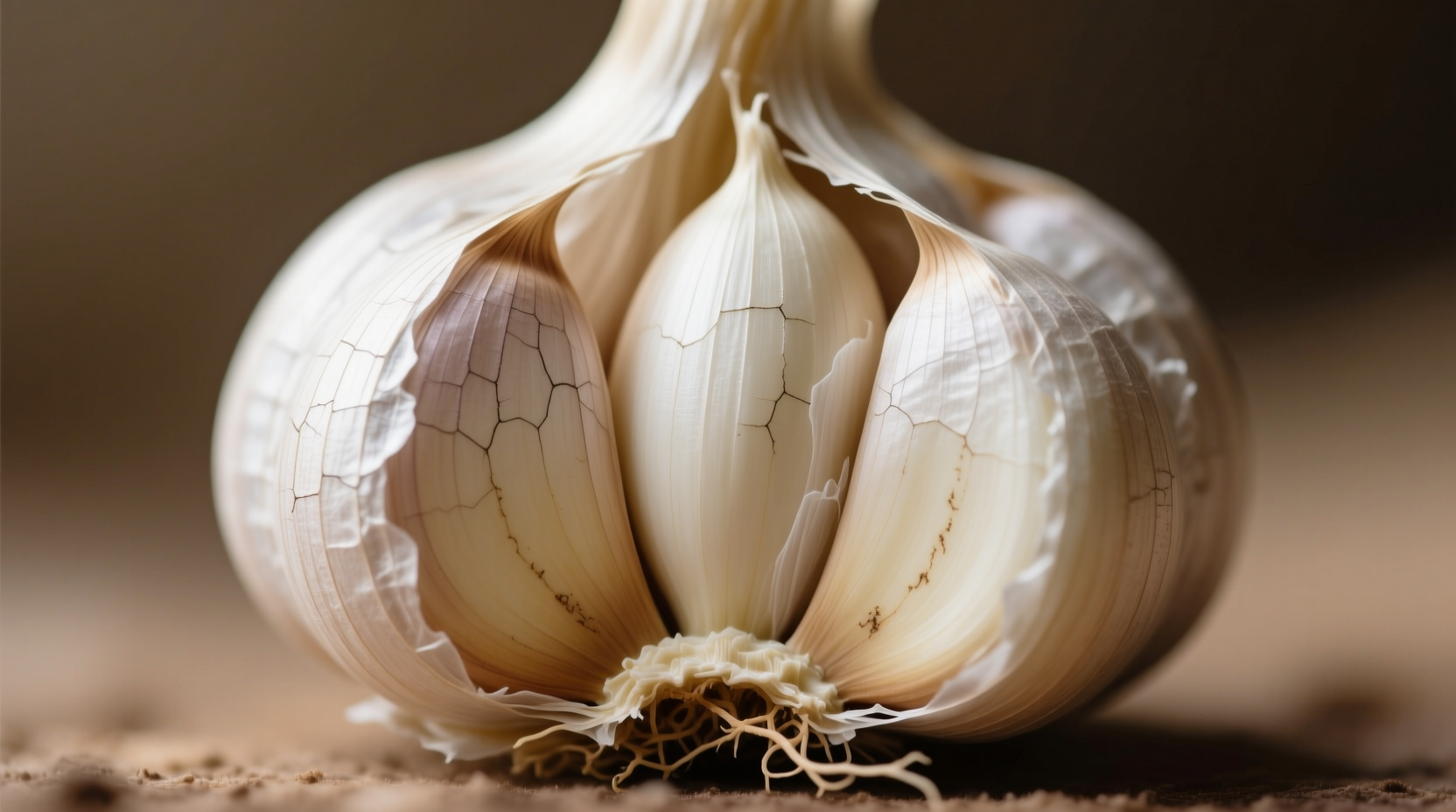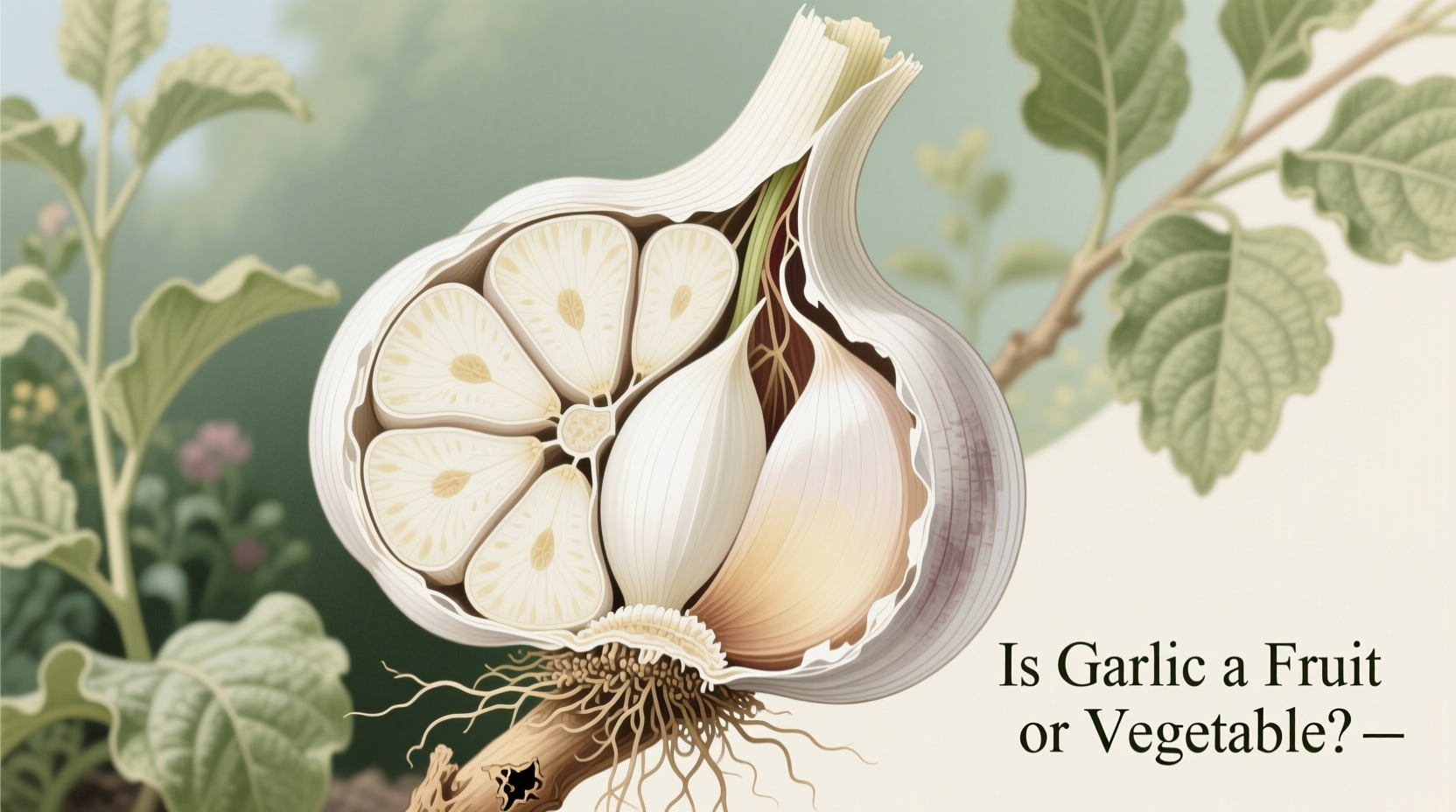Ever found yourself debating whether that pungent bulb in your kitchen qualifies as a fruit or vegetable? You're not alone. This confusion stems from the gap between scientific classification and everyday culinary usage. Let's clear up the mystery once and for all with evidence-based insights that will transform how you understand and use garlic.
Why the Confusion Exists: Botanical vs Culinary Classifications
When you search "is garlic a fruit or vegetable," you're encountering a classic case of scientific terminology clashing with kitchen language. In botanical terms, fruits develop from a flower's ovary and contain seeds, while vegetables are other plant parts like roots, stems, or leaves. Garlic bulbs? They're modified leaf bases—making them vegetables by strict definition.
Culinary tradition complicates things. Chefs and home cooks treat garlic as a seasoning or aromatic vegetable, rarely considering its botanical identity. This practical approach often overrides scientific accuracy in recipe development and meal planning.
Garlic's Botanical Identity: Following the Science
Garlic (Allium sativum) belongs to the Amaryllidaceae family, sharing lineage with onions, leeks, and chives. Its edible portion consists of cloves arranged in a bulb—technically an underground stem modification called a tunicate bulb. This structure stores nutrients for the plant's survival, functioning as a modified leaf rather than a seed-bearing fruit.
| Classification Type | Fruit Characteristics | Vegetable Characteristics | Where Garlic Fits |
|---|---|---|---|
| Botanical | Develops from flower ovary, contains seeds | Roots, stems, leaves, bulbs | Bulb (modified stem/leaf) |
| Culinary | Sweet, dessert ingredients | Savory cooking components | Seasoning/aromatic vegetable |
| Nutritional | High in natural sugars | Low-calorie, nutrient-dense | Non-starchy vegetable |
The Garlic Growth Cycle: Evidence from Plant Development
Understanding garlic's life cycle reveals why it can't be a fruit. True fruits form after pollination when the flower's ovary matures around seeds. Garlic rarely flowers in cultivation—most commercial varieties produce bulbils (tiny bulbs) instead of seeds. The part we eat develops underground independently of any flowering process.
According to research from the USDA Agricultural Research Service, garlic's bulb formation responds to day length and temperature cues, not pollination events. This physiological behavior aligns with other bulb vegetables like onions, not fruiting plants.
Culinary Reality: How Chefs Classify Garlic
Professional kitchens universally treat garlic as a vegetable or aromatic. In the "mise en place" system, chefs group garlic with onions, celery, and carrots as flavor foundations. This practical classification affects cooking techniques—garlic gets sautéed with vegetables, not treated like fruit which typically undergoes different preparation.
Nutritionally, the USDA FoodData Central categorizes garlic under vegetables, listing its nutritional profile alongside other alliums. One raw garlic clove (3g) provides:
- 4.5 calories
- 1g carbohydrates
- 0.2g fiber
- Significant allicin (the compound responsible for health benefits)

Common Misconceptions Debunked
"Garlic produces flowers, so it must make fruits" - While garlic scapes (flower stalks) appear in some varieties, the edible bulb develops separately. Any seed pods that form would technically be fruits, but these aren't the part we consume.
"Garlic seeds exist, so it's a fruit" - True garlic "seeds" are actually bulbils—miniature bulbs, not true seeds. Botanically, this makes them vegetative propagation structures, not fruit.
Practical Implications for Gardeners and Cooks
Knowing garlic's vegetable classification affects how you grow and use it:
- Gardening: Plant garlic in vegetable beds with other alliums, not with fruiting plants
- Storage: Treat garlic like other bulbs (cool, dry place) rather than fruits requiring refrigeration
- Cooking: Understand why garlic behaves differently than fruits in recipes—it caramelizes rather than breaks down like fruit
- Substitutions: Replace garlic with other allium vegetables (shallots, onions) rather than fruits
When exploring "is garlic considered a vegetable in recipes" or "why is garlic classified as a vegetable," remember this key distinction: the part we eat develops as a storage organ, not a seed-bearing structure. This explains why nutrition labels and culinary professionals consistently categorize garlic with vegetables.











 浙公网安备
33010002000092号
浙公网安备
33010002000092号 浙B2-20120091-4
浙B2-20120091-4